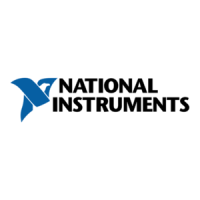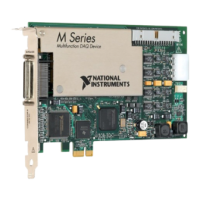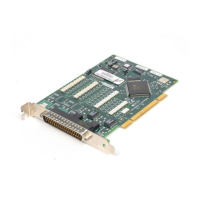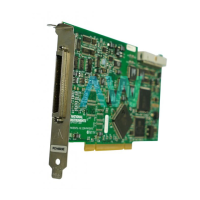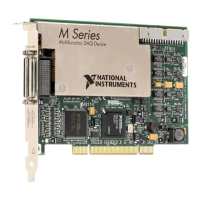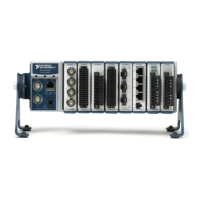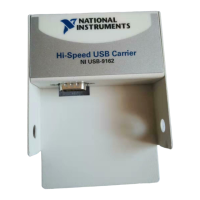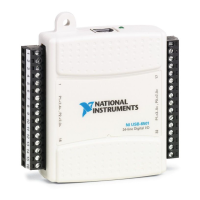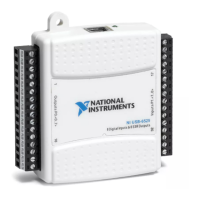4-10 | ni.com
Chapter 4 Analog Input
• Hardware-timed single point (HWTSP)—Typically, HWTSP operations are used to read
single samples at known time intervals. While buffered operations are optimized for high
throughput, HWTSP operations are optimized for low latency and low jitter. In addition,
HWTSP can notify software if it falls behind hardware. These features make HWTSP ideal
for real time control applications. HWTSP operations, in conjunction with the wait for next
sample clock function, provide tight synchronization between the software layer and the
hardware layer. Refer to the NI-DAQmx Hardware-Timed Single Point Lateness Checking
document, for more information. To access this document, go to
ni.com/info and enter
the Info Code daqhwtsp.
Note (NI USB-634
x/635x/636x Devices) USB X Series devices do not support
hardware-timed single point (HWTSP) operations.
Analog Input Triggering
Analog input supports three different triggering actions:
• Start trigger
• Reference trigger
• Pause trigger
Refer to the
AI Start Trigger Signal, AI Reference Trigger Signal, and AI Pause Trigger Signal
sections for information about these triggers.
An analog or digital trigger can initiate these actions. All MIO X Series devices support digital
triggering, but some do not support analog triggering. To find your device triggering options,
refer to the device specifications.
Connecting Analog Input Signals
Table 4-3 summarizes the recommended input configuration for both types of signal sources.
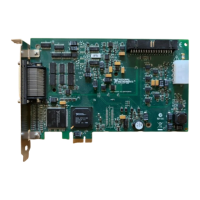
